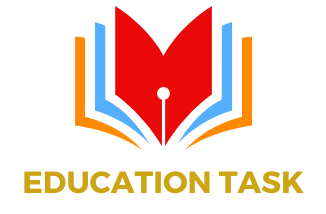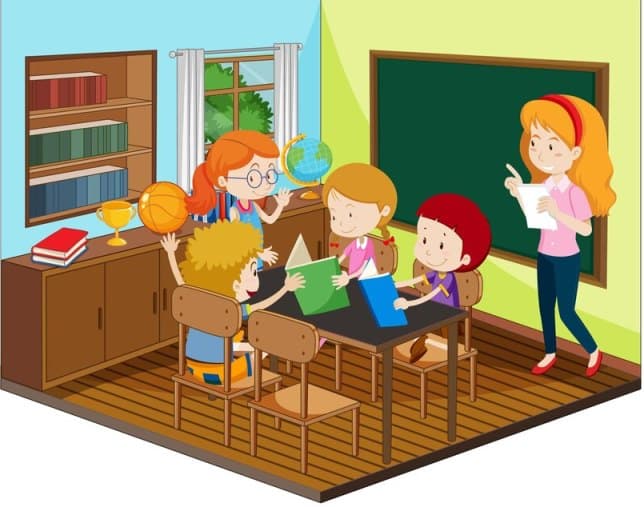Formative assessment is a crucial tool in modern education, serving as a process that helps educators understand students’ learning progress, inform instruction, and enhance student outcomes.
Formative assessments are continuous and offer immediate feedback, in contrast to summative assessments, which measure student learning at the conclusion of a unit of teaching.
By using formative assessment strategies, educators can identify knowledge gaps, track progress, and personalize instruction to enhance student engagement and achievement. Techniques such as quizzes, discussions, peer assessments, and real-time feedback allow teachers to make data-driven decisions and improve classroom outcomes.
What is Formative Assessment?
Formative assessment refers to a variety of methods teachers use to evaluate student comprehension, learning needs, and academic progress during a lesson or course.
The primary goal is to gather feedback that can be used to improve teaching and learning. This process is integral to creating a responsive learning environment where instruction can be tailored to meet the needs of all students.
Characteristics of Formative Assessment
Formative assessment is distinct from other types of assessments due to its focus on continuous learning and improvement. Below are its key characteristics:
- Ongoing and Continuous: Conducted throughout the learning process to monitor progress and make timely adjustments.
- Low-Stakes or No-Stakes: Unlike summative assessments, formative assessments are not heavily graded, reducing pressure on students.
- Feedback-Oriented: Provides immediate and constructive feedback to both students and teachers.
- Student-Centered: Encourages active participation and self-reflection in learning.
- Flexible and Adaptable: Can take various forms, such as quizzes, discussions, peer assessments, and self-evaluations.
- Diagnostic in Nature: Identifies learning gaps early, allowing teachers to adjust their instruction accordingly.
- Encourages Collaboration: Often includes peer and group activities that promote shared learning experiences.
Read Also: Active Learning Vs Semi-Supervised Learning: Which Method Should You Choose?
Benefits of Formative Assessment
Formative assessment provides numerous advantages for both students and educators.
For Students:
- Improves Learning Outcomes: Helps students understand concepts better by receiving immediate feedback.
- Reduces Anxiety: Since it is not heavily graded, students can focus on learning rather than worrying about scores.
- Encourages Self-Regulation: Teaches students to take responsibility for their own learning through self-assessment and goal-setting.
- Enhances Engagement: Interactive assessments like discussions and group work make learning more dynamic and enjoyable.
For Teachers:
- Informs Instruction: Provides real-time insights into student understanding, allowing for adjustments in teaching methods.
- Identifies Learning Gaps Early: Helps pinpoint areas where students struggle before a final assessment.
- Promotes Differentiated Instruction: Allows teachers to tailor lessons to meet diverse student needs.
- Strengthens Teacher-Student Interaction: Creates opportunities for personalized feedback and supportive learning environments.
Types of Formative Assessment
Formative assessments can take various forms, each serving unique purposes:
- Observations: Teachers can assess student behavior, participation, and engagement during class activities. For example: A teacher walks around the classroom while students work on a math problem, listening to their discussions and taking note of misconceptions.
- Quizzes and Polls: Short quizzes or polls (e.g., Kahoot!, Poll Everywhere) can be used to measure students’ comprehension of the content in real time. Example: A teacher asks a multiple-choice question using a show-of-hands poll: “Who thinks this sentence is grammatically correct?”
- Exit Tickets: At the end of a lesson, students can submit brief responses about what they learned or questions they still have. Example: In a literature class, students write one sentence explaining the main theme of a story before leaving the room.
- Think-Pair-Share: Students think about a question, discuss it with a partner, and then share with the larger group, allowing teachers to assess understanding through discussion. Example: In a biology class, students first think about why photosynthesis is important, then discuss their ideas with a partner before presenting them to the class.
- Peer and Self-Assessment: Students evaluate each other’s work, offering comments and encouraging a cooperative learning atmosphere. Example: In an English class, students swap essays and use a checklist to give feedback on thesis statements and grammar.
- One-Minute Papers: A quick writing exercise where students summarize key takeaways or answer a reflective question. Example: A teacher asks, “What was the most important thing you learned today?” and gives students one minute to write a response.
- Concept Maps: Students create visual representations of their understanding of a topic, helping to illustrate their thought processes. Example: In an economics class, students draw a concept map to show how supply and demand affect market prices.
Strategies for Implementing Formative Assessment
To effectively implement formative assessments in the classroom, teachers can use the following strategies:
1. Set Clear Learning Objectives
Begin by establishing clear, measurable learning objectives. Communicating these goals to students helps them understand what is expected and provides a framework for assessments.
2. Use a Variety of Assessment Methods
Use a variety of evaluation techniques to accommodate various learning preferences. Combining quizzes, discussions, projects, and reflections can provide a comprehensive view of student understanding.
3. Provide Timely Feedback
Feedback should be specific, constructive, and timely. Instead of simply marking answers as right or wrong, offer insights on how students can improve and what they did well.
4. Foster a Growth Mindset
Encourage a growth mindset by framing assessments as opportunities for learning rather than judgment. Remind students that mistakes are part of the learning process and that improvement is possible.
5. Incorporate Technology
Utilize educational technology tools to facilitate formative assessment. Platforms like Google Forms, Nearpod, or Edmodo can streamline data collection and provide instant feedback.
6. Encourage Student Involvement
Involve students in the assessment process. Teach them to self-assess and peer-assess, helping them develop critical thinking skills and responsibility for their learning.
7. Analyze and Adjust Instruction
Use the data collected from formative assessments to inform instructional decisions. To fill up knowledge gaps, find trends in student performance and modify lesson plans appropriately.
8. Create a Safe Environment
Create a welcoming environment in the classroom where students may freely share their ideas and queries. This promotes open communication and involvement in evaluations.
9. Reflect on the Assessment Process
After each assessment, reflect on its effectiveness. Consider what worked well and what could be improved for next time, allowing for continuous refinement of your approach.
Conclusion
Using formative assessment in the classroom is a dynamic and essential approach to enhancing student learning. By continuously gathering feedback, teachers can identify students’ strengths and areas for improvement, adjust their teaching methods, and create a more engaging learning environment.
Whether through quizzes, discussions, observations, or technology-based tools, formative assessments offer opportunities for real-time intervention, preventing gaps in knowledge from widening.
The key to success with formative assessment lies in its consistent and thoughtful implementation. When aligned with learning objectives, varied in format, and integrated into daily activities, formative assessments provide valuable insights that support both student growth and instructional effectiveness.
Ultimately, when used correctly, formative assessment helps create a more responsive, student-centered classroom where every learner can thrive.




